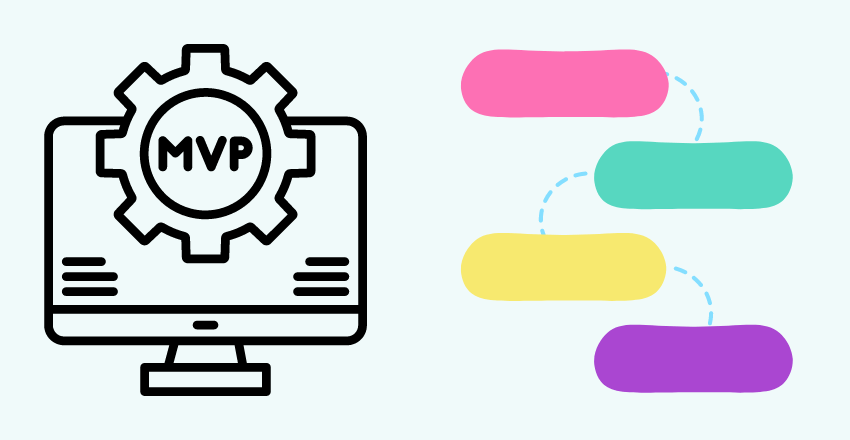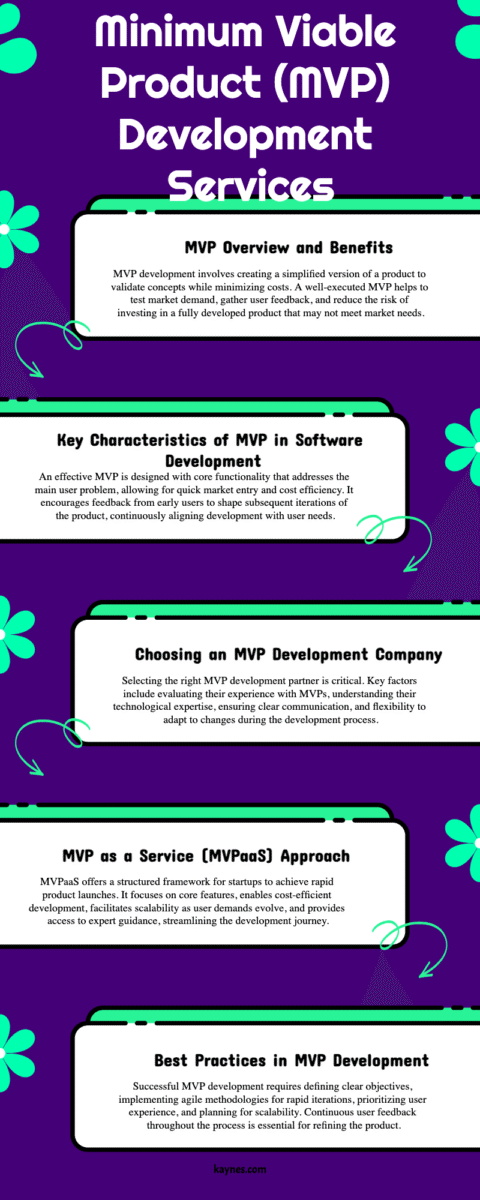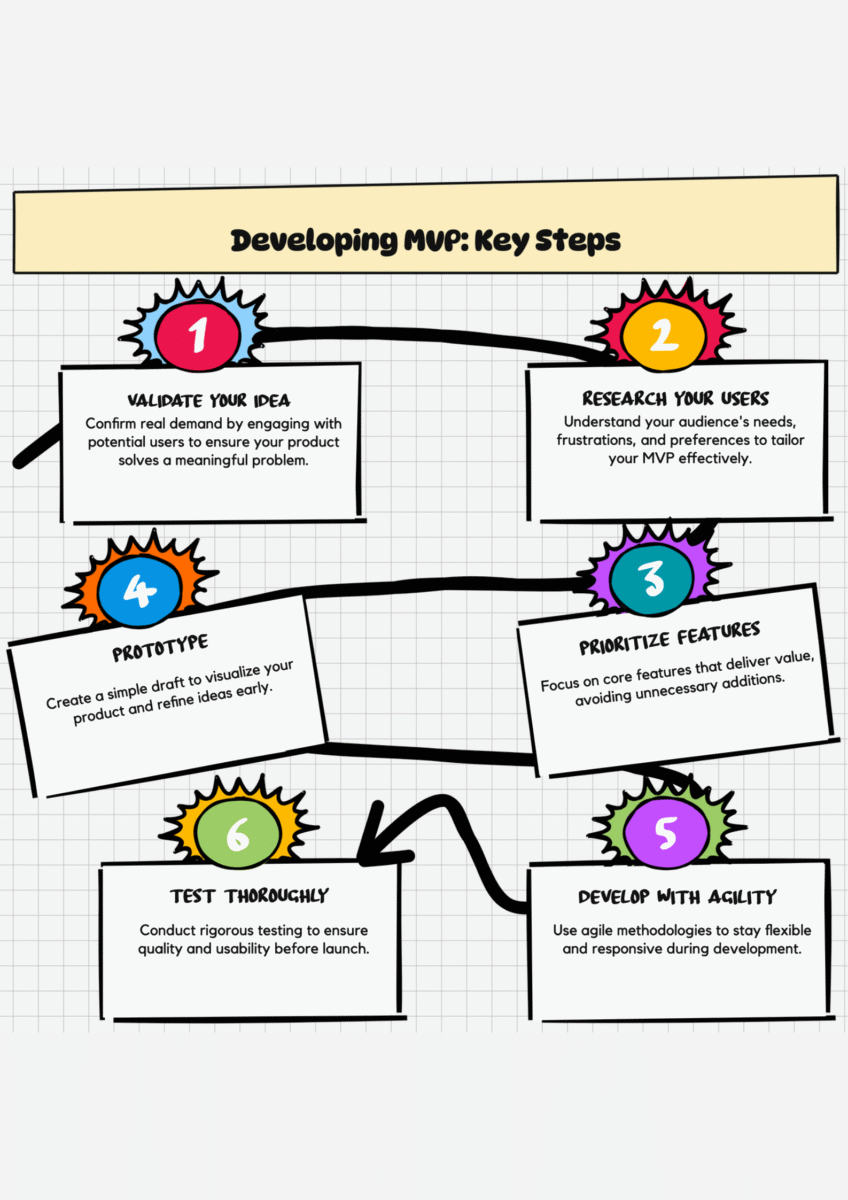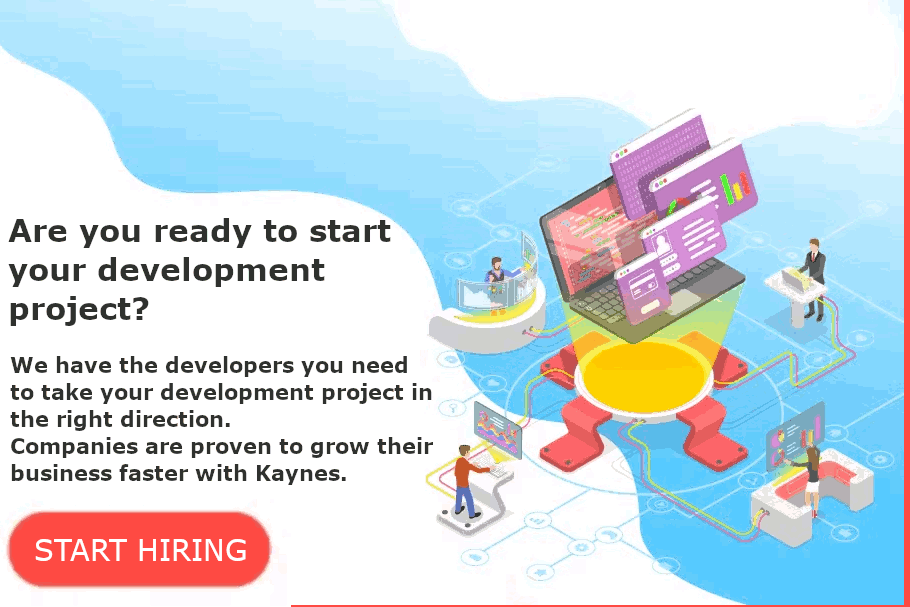
Minimum Viable Product (MVP) Development Services
Creating an MVP is considered a quick and cheap way to validate a startup idea. I’ve seen this mindset eat away the potential of many promising startups, as they end up with a bare-bone product that fails to appeal to their market.
Thank you for reading this post, don't forget to subscribe!Instead, we advocate for an MVP development process that is not just fast and affordable but is also strategically designed to marry your idea with market expectations.
Getting your product to market quickly and efficiently is crucial. This is where Minimum Viable Product (MVP) development services come into play. But what exactly is an MVP, and how can it benefit your business? In this simple guide, we’ll explore the world of MVP development, its importance in software development, and how to choose the right MVP development company for your project.

What is MVP Development Services?
MVP development services are specialized offerings that help businesses create a basic version of their product with just enough features to satisfy early customers and provide feedback for future development. These services typically include:
- Concept validation
- Market research
- Feature prioritization
- Rapid prototyping
- Iterative development
- User testing and feedback collection
What Does MVP Mean in Software Development?
In software development, MVP stands for Minimum Viable Product. It’s a concept popularized by Eric Ries in his book “The Lean Startup.” An MVP is the simplest version of a product that can still deliver value to users and gather meaningful feedback for further development.
Key characteristics of an MVP in software development include:
- Core functionality: Focuses on essential features that solve the main problem
- Quick to market: Allows for rapid development and launch
- Cost-effective: Minimizes initial development costs
- Feedback-driven: Enables gathering user insights for future iterations
What is an MVP in the World of Software Development?
In the world of software development, an MVP serves as a strategic approach to product development. It allows companies to:
- Test market demand: Validate product ideas before investing heavily
- Gather user feedback: Collect real-world data to inform future development
- Iterate quickly: Make improvements based on user insights
- Minimize risk: Reduce the chance of building a product nobody wants
- Attract investors: Demonstrate product potential with a working prototype
Choosing the Right MVP Development Company
Selecting the right MVP development company is a pivotal step in bringing your product vision to life. The choice you make can significantly impact your project’s success. Here’s how to make an informed decision:
- Evaluate Their Experience: Prioritize companies with a strong history of successful MVP development. Their experience will not only guide your project through potential pitfalls but also ensure a smoother development process. A company with a robust portfolio of MVPs across various industries is likely to bring valuable insights and tried-and-tested strategies to your project.
- Assess Technology Expertise: Ensure the company possesses deep expertise in the specific technologies required for your project. This includes familiarity with modern programming languages, frameworks, and platforms relevant to your MVP. A technically proficient team can innovate and implement your ideas effectively, keeping your product ahead of the curve.
- Demand Clear Communication: Effective communication is the backbone of any successful project. Choose a company that prioritizes transparency and keeps you informed at every stage of development. Regular updates, clear timelines, and a willingness to listen to your feedback are indicators of a team that values collaboration and your input.
- Ensure Flexibility: The ability to adapt to changes swiftly is essential in MVP development, where project requirements may evolve based on user feedback or market trends. Opt for a company that demonstrates flexibility and agility, with a process that accommodates iterative development and rapid pivots.
- Review Their Portfolio: A company’s past projects and client testimonials provide valuable insights into their capabilities and the quality of their work. Dive into their portfolio to evaluate the diversity and complexity of the projects they’ve handled. Positive testimonials and long-term client relationships are strong indicators of a company’s reliability and performance.
Some top MVP development companies include:
MVP as a Service: A New Approach
MVP as a Service (MVPaaS) is revolutionizing the software development landscape, offering a dynamic and efficient way to bring new products to market. This innovative model provides several key advantages that make it an attractive option for startups and businesses looking to validate their ideas quickly and effectively.
MVP as a Service (MVPaaS) is an emerging trend in the software development industry. This model offers:
- Accelerated Time-to-Market: MVPaaS leverages a streamlined development process designed to expedite the launch of your product. By focusing on core features and minimizing unnecessary complexities, this approach drastically reduces development timelines. As a result, you can quickly introduce your MVP to users, gather feedback, and make data-driven decisions that shape the future of your product.
- Cost-Effectiveness: One of the most compelling aspects of MVPaaS is its cost efficiency. Rather than investing heavily in full-scale development from the outset, MVPaaS allows you to pay only for the essential features and services you need. This model minimizes financial risk, enabling you to allocate resources strategically and invest in areas that offer the highest return on investment as your product evolves.
- Scalability: MVPaaS is designed with growth in mind. As your product gains traction and user needs evolve, you can easily scale up your MVP to include additional features and capabilities. This flexibility ensures that your product can adapt to market demands and expand without requiring a complete overhaul of the underlying architecture. With MVPaaS, your product can grow organically, keeping pace with your business objectives.
- Expert Guidance: With MVPaaS, you gain access to a team of seasoned professionals who bring a wealth of experience to your project. These experts provide invaluable insights and support throughout the development process, from initial concept validation to post-launch iterations. Their guidance helps you navigate challenges, avoid common pitfalls, and make informed decisions that enhance the quality and impact of your MVP.
MVP as a Service is more than just a development model—it’s a strategic approach that empowers businesses to innovate with confidence, launch faster, and scale intelligently. By embracing MVPaaS, you position your product for success in a competitive market, all while managing costs and maintaining the agility needed to adapt to changing conditions.
MVP Software Development: Best Practices
To ensure successful MVP software development:
- Define clear goals and success metrics
- Focus on core features that solve the main problem
- Use agile methodologies for rapid iteration
- Continuously gather and incorporate user feedback
- Prioritize user experience and interface design
- Plan for scalability from the beginning
MVP Development in Brazil: A Growing Hub
Brazil has emerged as a significant player in the MVP development scene. The country offers:
- Skilled developers at competitive rates
- A growing startup ecosystem
- Government initiatives supporting tech innovation
- A large domestic market for testing products
Companies like Kaynes have established themselves as leaders in MVP development in Brazil and Latin America.
Developing MVP: Key Steps

Building an MVP isn’t just about getting a product out there; it’s about doing it smartly. The process of developing an MVP typically involves:
-
- Validate Your Idea: Before you dive in, make sure there’s a real demand for what you’re offering. Talk to potential users, gauge interest, and confirm that your product solves a problem people care about. This step is crucial because it prevents you from sinking time and money into something that might not fly.
- Research Your Users: Get to know your audience inside and out. What are their needs, frustrations, and preferences? The more you understand the people you’re building for, the better you can tailor your MVP to hit the mark. Think of this as your foundation—everything else builds on it.
- Prioritize Features: You can’t do everything at once, so focus on what matters most. Identify the core features that will deliver value to your users and set the rest aside for later. This step is all about staying lean and avoiding feature bloat.
- Prototype: Sketch out a simple version of your product. This isn’t the final product—it’s a rough draft that lets you visualize how your MVP will work. Prototyping helps you spot potential issues early and refine your ideas before you start development.
- Develop with Agility: When it’s time to build, use agile methodologies to stay flexible and responsive. This approach allows you to make adjustments on the fly, keeping the project on track even as new insights or challenges arise.
- Test Thoroughly: Don’t just assume everything works—put your MVP through its paces. Conduct rigorous testing to catch bugs, usability issues, and anything else that could trip up your users. Quality assurance isn’t just a checkbox; it’s what keeps your product from falling flat when it goes live.
- Launch to Early Adopters: When your MVP is ready, release it to a small group of early adopters. These are the people who will give you honest feedback and help you fine-tune your product. A soft launch lets you work out any kinks before going broader.
- Collect Feedback: Post-launch, gather as much user feedback as you can. This is where you learn what works, what doesn’t, and what needs to be added or improved. Use these insights to guide the next phase of development and make your product even better.
MVP Dev Reviews: What to Look For
When evaluating MVP development services, consider the following factors:
- Technical expertise
- Project management skills
- Communication and collaboration
- Timeliness and adherence to deadlines
- Quality of deliverables
- Post-launch support
Websites like Clutch offer comprehensive reviews of MVP development companies.
MVP Builder: Tools and Platforms
Several tools and platforms can help streamline the MVP development process:
- Bubble: A no-code platform for building web applications
- Figma: A collaborative interface design tool
- Firebase: A platform for developing mobile and web applications
- InVision: A digital product design platform
- Sketch: A vector graphics editor for digital design
MVP development services offer a powerful approach to bringing your product to market quickly and efficiently. By focusing on core features, gathering user feedback, and iterating rapidly, you can minimize risk and maximize your chances of success. Whether you choose to work with an MVP development company or use MVP builder tools, the key is to stay focused on delivering value to your users and continuously improving your product based on real-world feedback.



